Scanning Around With Gene: The True Story of Smokey Bear
Last week I promised to take a look at the story of Smokey Bear, so I thought I’d get right to it since it is, in part, a touching tale about a little bear that captured the hearts of America.
Prior to 1944 there were various efforts by the United States Forest Service and others to produce posters warning people of the dangers of forest fires. In 1942 when the film Bambi came out, Walt Disney allowed his characters to appear in fire prevention public service campaigns. But Disney only licensed Bambi to the government for one year, so by the end of 1943 a new character was needed to become the symbol of forest fire prevention. Continuing on the popularity of the Disney animal-themed posters, an image of a bear was chosen. “Smokey” was named after Smokey Joe Martin, a New York City Fire Department hero who suffered burns and blindness during a dramatic rescue in 1922. Click on any image for a larger version.
The first image of Smokey was drawn by Albert Staehle in 1944, but soon that responsibility was taken over by Forest Service worker Rudy Wendelin who became the full-time campaign artist until his retirement in 1973.
Smokey’s correct name, by the way, is Smokey Bear, even though over the years various spin-offs, including a popular 1952 song and 1955 children’s book added a “the” to the name.
Smokey was popular from the start, but didn’t enjoy widespread fame until 1950 when the fictional character of Smokey became a living bear. The story of the real Smokey Bear is told in these images from a 1960 cartoon book called The True Story of Smokey Bear. It chronicles what happened in the spring of 1950 during the Capitan Gap fire, which burned 17,000 acres in the Capitan Mountains of New Mexico.
A group of fire fighters were trapped in the blaze but survived, only to find a small black bear cub, badly burnt, clinging to a tree, barely alive.
The men saved the bear and brought it to veterinarians who bandaged the bear and turned it over to a Department of Fish and Game ranger named Ray Bell, who cared for the little cub along with his wife and children, Don and Judy. He was named Smokey after the fictional character.
Little Smokey became a media sensation as he was nursed back to health. Soon Smokey was on TV and radio, and Smokey fever swept the nation. When Smokey arrived at the National Zoo in Washington DC, he was greeted by a crowd at the airport.
Smokey lived at the zoo for 26 years and was a popular attraction. At one point Smokey was getting as many as 13,000 letters per week so the United States Post Office gave him his own zip code, 20252. He ate peanut butter sandwiches, bluefish and trout. Smokey died in 1976 and his remains were flown back to Capitan, New Mexico and buried at what is now the Smokey Bear Historical Park.
There were Smokey Bear dolls, Smokey Bear songs, coloring books and now, of course, smokeybear.com. Smokey’s hat, by the way, was standard issue for the U.S. National Park Service rangers and similar hats are still used by many state police around the country, hence the origin of why truckers often refer to police officers as “smokey” or “bears.”
Smokey Bear would probably have been popular even if he had remained a purely fictional character. But when little Smokey Bear was rescued from the forest that fateful day in 1950, the fictional character became a phenomenon and living symbol of the dangers of forest fires.
And remember, only you can prevent forest fires.



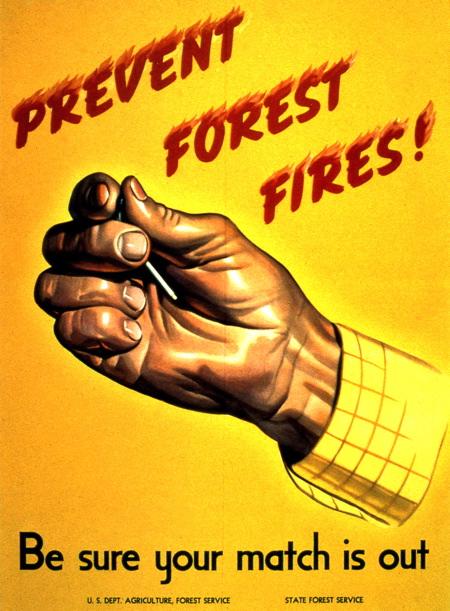



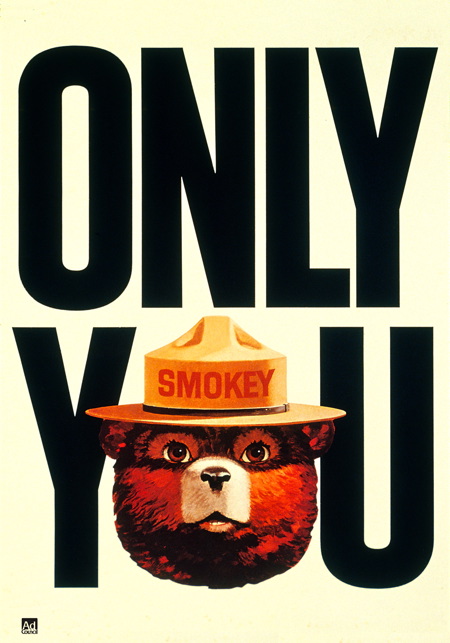







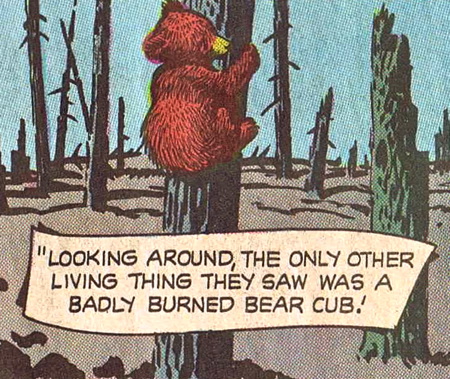



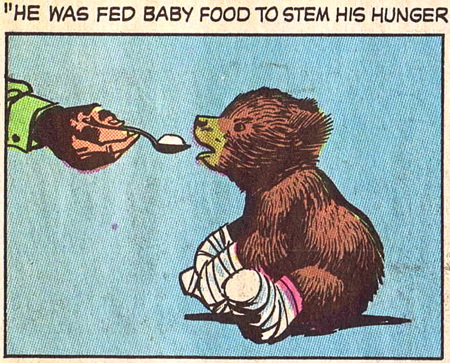

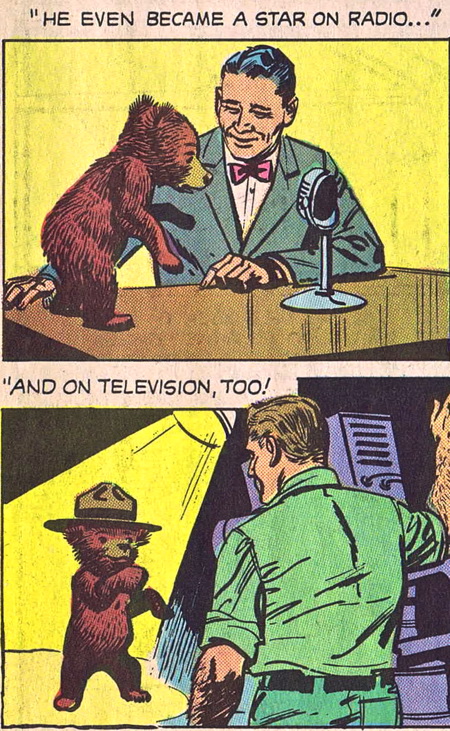



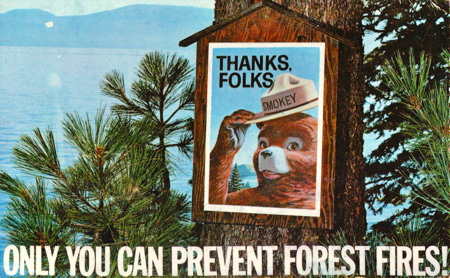

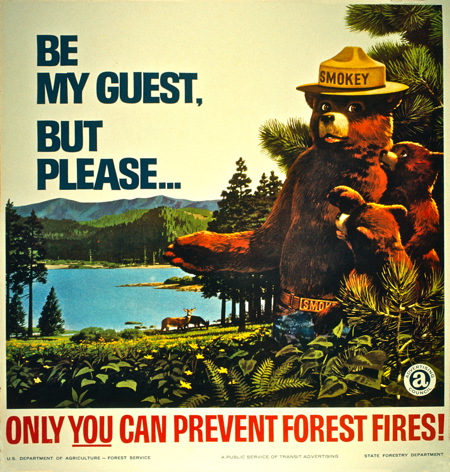
This would be a great link the National Forest Reserve America could send in their e-mails when they confirm reservations.